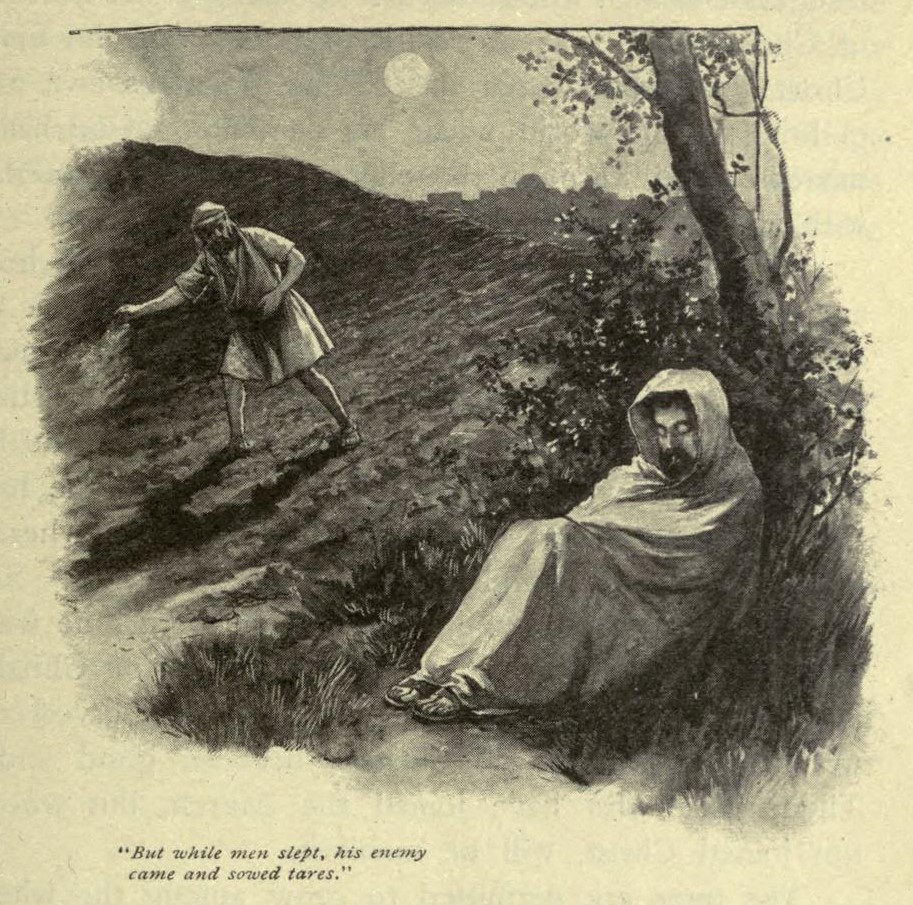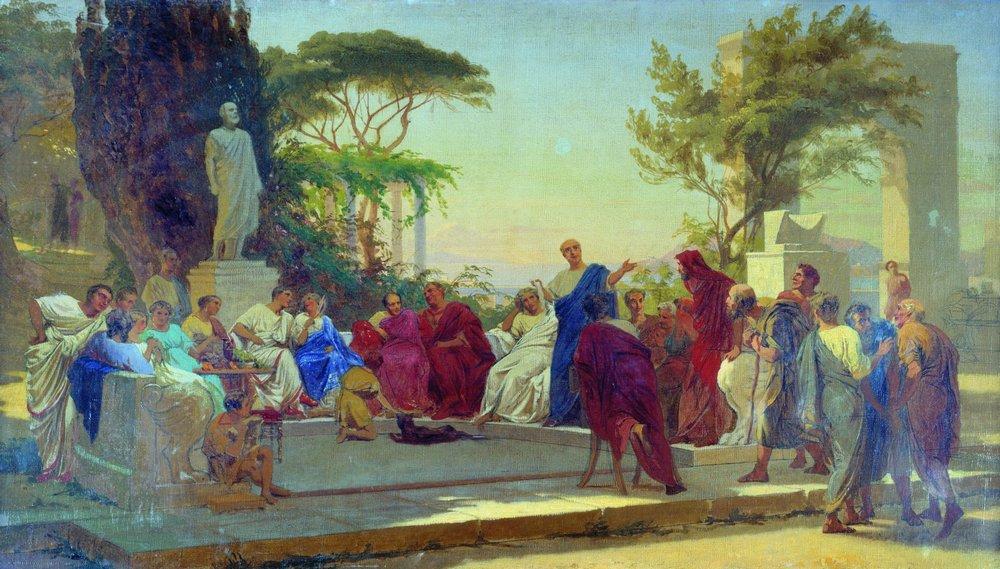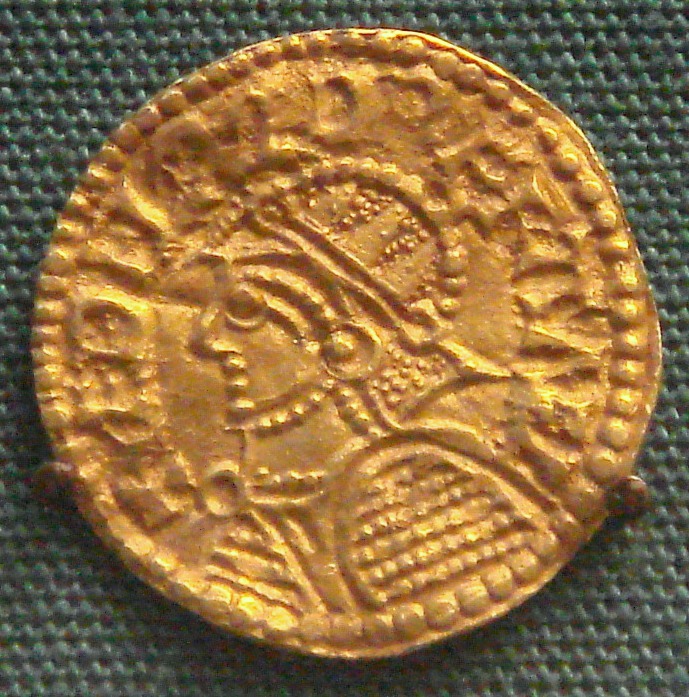|
Darnel
''Lolium temulentum'', typically known as darnel, poison darnel, darnel ryegrass or cockle, is an annual plant of the genus ''Lolium'' within the family Poaceae. The plant stem can grow up to one meter tall, with inflorescence in the ears and purple grain. It has a cosmopolitan distribution. Growth Darnel usually grows in the same production zones as wheat and was a serious weed of cultivation, a Vavilovian mimic of wheat, until modern sorting machinery enabled darnel seeds to be separated efficiently from seed wheat. The similarity between these two plants is so great that in some regions, darnel is called "false wheat". It bears a close resemblance to wheat until the ear appears. The spikes of ''L. temulentum'' are more slender than those of wheat. The spikelets are oriented edgeways to the rachis and have only a single glume, while those of wheat are oriented with the flat side to the rachis and have two glumes. Wheat will appear brown when ripe, whereas darnel is black. D ... [...More Info...] [...Related Items...] OR: [Wikipedia] [Google] [Baidu] |
Parable Of The Tares
The Parable of the Weeds or Tares (KJV: ''tares'', Weymouth New Testament, WNT: ''darnel'', Douay–Rheims Bible, DRB: ''cockle'') is a parables of Jesus, parable of Jesus which appears in . The parable relates how servants eager to pull up weeds were warned that in so doing they would root out the wheat as well and were told to let both grow together until the harvest. Later in Matthew, the weeds are identified with "the children of Satan, the evil one", the wheat with "the children of the Kingdom of heaven (Gospel of Matthew), Kingdom", and the harvest with "the end of the age". A shorter, compressed version of the parable is found without any interpretation in the Biblical apocrypha, apocryphal Gospel of Thomas. Narrative The parable in the Gospel of Matthew goes as follows: Analysis The word translated "tares" in the King James Version is (''zizania''), plural of (''zizanion''). This word is thought to mean Lolium temulentum, darnel (''Lolium temulentum''), a ryegrass whic ... [...More Info...] [...Related Items...] OR: [Wikipedia] [Google] [Baidu] |
Mithridate
Mithridate, also known as mithridatium, mithridatum, or mithridaticum, is a semi-mythical remedy with as many as 65 ingredients, used as an antidote for poisoning, and said to have been created by Mithridates VI Eupator of Pontus in the 1st century BC. It was one of the most complex and highly sought-after drugs during the Middle Ages and the Renaissance, particularly in Italy and France, where it was in continual use for centuries. An updated recipe called theriac ( Theriacum Andromachi) was known well into the 19th century.Mithridate . Mithridate takes its name from its inventor, Mithridates VI, king of the ancient Anatolian |
Lolium
''Lolium'' is a genus of tufted grasses in the bluegrass subfamily (Pooideae). It is often called ryegrass, but this term is sometimes used to refer to grasses in other genera. They are characterized by bunch-like growth habits. ''Lolium'' is native to Europe, Asia and northern Africa, as well as being cultivated and naturalized in Australia, the Americas, and various oceanic islands. Ryegrasses are naturally diploid, with 2n=14, and are closely related to the fescues (''Festuca''). Ryegrass should not be confused with rye, which is a grain crop. Species the species of ''Lolium'' listed by Plants of the World Online include: ; Formerly included Several former ''Lolium'' species now regarded as part of other genera: '' Castellia'', '' Enteropogon'', '' × Festulolium'', '' Hainardia'', '' Lepturus'', '' Melica'', and '' Vulpia''. File:Perennial Ryegrass.jpg, Perennial ryegrass, used as winter lawn. File:Illustration Leymus arenarius and Lolium temulentum0.jpg, Poison ... [...More Info...] [...Related Items...] OR: [Wikipedia] [Google] [Baidu] |
Vavilovian Mimicry
In plant biology and agriculture, Vavilovian mimicry (also crop mimicry or weed mimicry) is a form of mimicry in plants where a weed evolves to share characteristics with a crop plant through generations of involuntary artificial selection. It is named after the Russian plant geneticist Nikolai Vavilov. Selection against the weed may occur by killing a young or adult weed, by separating its seeds from those of the crop by winnowing, or both. The process has operated since Neolithic times, creating secondary crops such as rye and oats through mimicry of cereals such as wheat. Definition Vavilovian mimicry is a form of mimicry in plants where a weed of cultivation evolves to share characteristics with a crop through generations of artificial selection. It is sometimes described as crop mimicry or weed mimicry. It is named after Nikolai Vavilov, a prominent Russian plant geneticist of the early 20th century. In addition, Vavilov described as 'secondary crops' cereals such as ... [...More Info...] [...Related Items...] OR: [Wikipedia] [Google] [Baidu] |
Horace
Quintus Horatius Flaccus (; 8 December 65 BC – 27 November 8 BC), Suetonius, Life of Horace commonly known in the English-speaking world as Horace (), was the leading Roman lyric poet during the time of Augustus (also known as Octavian). The rhetorician Quintilian regarded his '' Odes'' as the only Latin lyrics worth reading: "He can be lofty sometimes, yet he is also full of charm and grace, versatile in his figures, and felicitously daring in his choice of words."Quintilian 10.1.96. The only other lyrical poet Quintilian thought comparable with Horace was the now obscure poet/metrical theorist, Caesius Bassus (R. Tarrant, ''Ancient Receptions of Horace'', 280) Horace also crafted elegant hexameter verses ('' Satires'' and '' Epistles'') and caustic iambic poetry ('' Epodes''). The hexameters are amusing yet serious works, friendly in tone, leading the ancient satirist Persius to comment: "as his friend laughs, Horace slyly puts his finger on his every fault; once let ... [...More Info...] [...Related Items...] OR: [Wikipedia] [Google] [Baidu] |
Agricultural Pursuits
Agriculture encompasses crop and livestock production, aquaculture, and forestry for food and non-food products. Agriculture was a key factor in the rise of sedentary human civilization, whereby farming of domesticated species created food surpluses that enabled people to live in the cities. While humans started gathering grains at least 105,000 years ago, nascent farmers only began planting them around 11,500 years ago. Sheep, goats, pigs, and cattle were domesticated around 10,000 years ago. Plants were independently cultivated in at least 11 regions of the world. In the 20th century, industrial agriculture based on large-scale monocultures came to dominate agricultural output. , small farms produce about one-third of the world's food, but large farms are prevalent. The largest 1% of farms in the world are greater than and operate more than 70% of the world's farmland. Nearly 40% of agricultural land is found on farms larger than . However, five of every six farms in th ... [...More Info...] [...Related Items...] OR: [Wikipedia] [Google] [Baidu] |
Gospel Of Matthew
The Gospel of Matthew is the first book of the New Testament of the Bible and one of the three synoptic Gospels. It tells the story of who the author believes is Israel's messiah (Christ (title), Christ), Jesus, resurrection of Jesus, his resurrection, and his Great Commission, mission to the world. Matthew wishes to emphasize that the Jewish Christianity, Jewish tradition should not be lost in a church that was increasingly becoming gentile. The gospel reflects the struggles and conflicts between the evangelist's community and the other Jews, particularly with its sharp criticism of the scribes, chief priests and Pharisees with the position that the Kingdom of God (Christianity), Kingdom of Heaven has been taken away from them and given instead to the church. Scholars find numerous problems with the traditional attribution to the Matthew the Apostle, Apostle Matthew, though it is possible the gospel incorporates a source written by the disciple. The predominant scholarly view ... [...More Info...] [...Related Items...] OR: [Wikipedia] [Google] [Baidu] |
Æthelred The Unready
Æthelred II (,Different spellings of this king's name most commonly found in modern texts are "Ethelred" and "Æthelred" (or "Aethelred"), the latter being closer to the original Old English form . Compare the modern dialect word . ; ; 966 – 23 April 1016), known as Æthelred the Unready, was List of English monarchs, King of the English from 978 to 1013 and again from 1014 until his death in 1016. His epithet comes from the Old English word meaning "poorly advised"; it is a pun on his name, which means "well advised". Æthelred was the son of Edgar, King of England, King Edgar and Ælfthryth (wife of Edgar), Queen Ælfthryth. He came to the throne at about the age of 12, following the assassination of his elder half-brother, King Edward the Martyr. The chief characteristic of Æthelred's reign was conflict with the Danes (tribe), Danes. After several decades of relative peace, Danish raids on English territory began again in earnest in the 980s, becoming markedly more se ... [...More Info...] [...Related Items...] OR: [Wikipedia] [Google] [Baidu] |
Carl Linnaeus
Carl Linnaeus (23 May 1707 – 10 January 1778), also known after ennoblement in 1761 as Carl von Linné,#Blunt, Blunt (2004), p. 171. was a Swedish biologist and physician who formalised binomial nomenclature, the modern system of naming organisms. He is known as the "father of modern Taxonomy (biology), taxonomy". Many of his writings were in Latin; his name is rendered in Latin as and, after his 1761 ennoblement, as . Linnaeus was the son of a curate and was born in Råshult, in the countryside of Småland, southern Sweden. He received most of his higher education at Uppsala University and began giving lectures in botany there in 1730. He lived abroad between 1735 and 1738, where he studied and also published the first edition of his ' in the Netherlands. He then returned to Sweden where he became professor of medicine and botany at Uppsala. In the 1740s, he was sent on several journeys through Sweden to find and classify plants and animals. In the 1750s and 1760s, he co ... [...More Info...] [...Related Items...] OR: [Wikipedia] [Google] [Baidu] |
Transformation Of Species
The Transmutation of species and transformism are 18th and early 19th-century ideas about the change of one species into another that preceded Charles Darwin's theory of evolution through natural selection. The French ''Transformisme'' was a term used by Jean Baptiste Lamarck in 1809 for his theory, and other 18th and 19th century proponents of pre-Darwinian evolutionary ideas included Denis Diderot, Étienne Geoffroy Saint-Hilaire, Erasmus Darwin, Robert Grant, and Robert Chambers, the anonymous author of the 1844 book ''Vestiges of the Natural History of Creation''. Such ideas were associated with 18th century ideas of Deism and human progress. Opposition in the scientific community to these early theories of evolution, led by influential scientists like the anatomists Georges Cuvier and Richard Owen, and the geologist Charles Lyell, was intense. The debate over them was an important stage in the history of evolutionary thought and influenced the subsequent reaction to Darwi ... [...More Info...] [...Related Items...] OR: [Wikipedia] [Google] [Baidu] |






